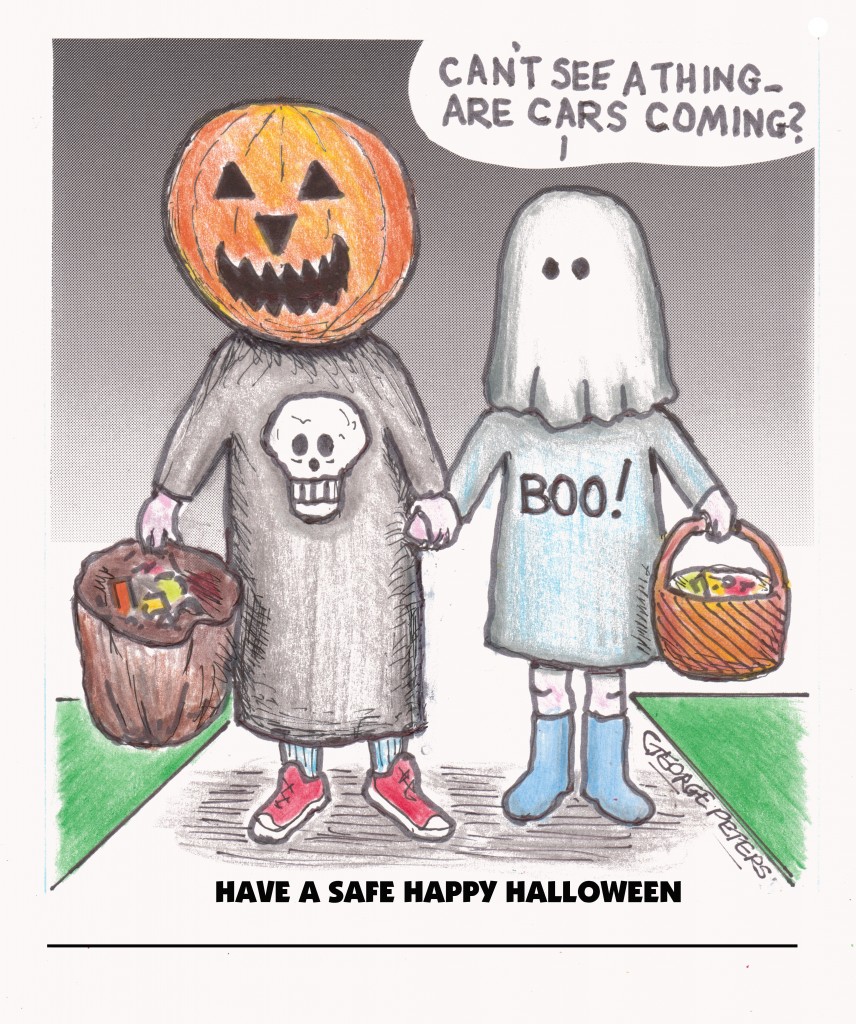Next Friday, Oct. 31, thousands of children will be reciting the words “Trick or Treat” in every community in Newport Beach.
NB Indy writer Richard Simon offers a history of Halloween traditions, and also a list of tips to ensure a safe and happy Halloween.

For most kids, the history of Halloween goes as far back as last Oct. 31 and generally focuses on how much candy they scored, what costume they wore, or how fast they ran after egging their icky classmate’s house.
Folklore has it that Halloween originated thousands of years ago in pagan Europe, before the birth of Christianity (scholars are still researching exactly when it started). Back then, Halloween symbolized the start of winter, burning of leaves, and purifying by fire of everything evil and old.
Academics write that the origin of Halloween is Celtic, and celebrates the harvest as well as commemoration of the deceased.
The name Halloween stems from All Hallows’ Evening in the 16th century, where “hallows” refers to halos worn by angels.
Originally, celebrants in Europe carved Jack O’ Lanterns from turnips, potatoes or beets, but in America, Irish and Scottish immigrants in the m id 1800s found pumpkins easier to sculpt.
The large orange squash prevalent at that time in U.S. gardens and fields became the official American face of Halloween.
The name Jack O’ Lantern originates from an Irish folktale about a man named Stingy Jack, who had a strained relationship with the devil. When Jack died, the devil refused him entrance to hell, but gave him a burning coal to light his way into darkness. So Jack carved out a turnip into which he placed the coal; he has been roaming the earth ever since.
And people have been carving scary faces into turnips and pumpkins ever since to scare off wandering evil spirits.
The practice of “trick or treating” dates back to medieval times when people went door to door on Hallowmas (Nov. 1) and received food in return for prayers for the dead on All Souls Day (Nov. 2).
Modern trick or treating became popular in the mid-20th century, and it’s easy to see why: Halloween candy, costumes and related products account for more than $6 billion in revenue.
Halloween Safety
The history of Halloween in Newport Beach is mostly one of joy for kids and their parents, suggested Newport Beach Police Department Crime Prevention Specialist Andi Querry.
A records search in the department’s new computer system revealed no significant crime statistics that were Halloween related.
Nevertheless, according to Lt. Jeff Brouwer, “we always have an increased deployment on a holiday, because there is usually an increase in both traffic and visitors to our community.”
He added, “By showing a greater visible presence, we can help to reduce crime and traffic concerns.
Crime prevention in large part is information sharing. Querry offers the following tips for safe trick or treating in the hopes that her computer database continues to remain free of negative Halloween-related crime stats in Newport:
- Be sure older children go with friends, and that younger children are accompanied by a trusted adult when trick-or-treating.
- Accompany younger children to the door of every home.
- Teach children to never enter a home without prior permission from parents or guardians.
- Teach children to never approach a vehicle, occupied or not, unless accompanied by parent or adult.
- Make sure all children wear reflective clothing and carry a glo-stick or battery-powered light from dusk into night, and also wear non-baggy clothing with comfortable shoes.
- Make sure children can breathe properly and easily when wearing masks.
- Teach children to be aware of suspicious events and report them.
- Teach children to yell loudly, scream, kick and resist if people try to grab them; make a scene.
- Tell children to never approach a home that is not well lit both on the pathway and at the front door.
- Consider organizing parties at home, in schools or community centers as an alternative to trick-or-treating.
- Parents should inspect all candy, making sure that all wrappers are intact.
- Stay away from pumpkins illuminated by candles. Use battery powered lights for illumination.
- Look both ways before crossing the street; masks can impair visibility. Best to cross at crosswalks.
You can scare up more safety hints on a variety of websites, including the American Academy of Pediatrics at aap.org or National Center for Missing and Exploited Children at missingkids.com.
Contact the writer at Pleasepitchrich@yahoo.com.




